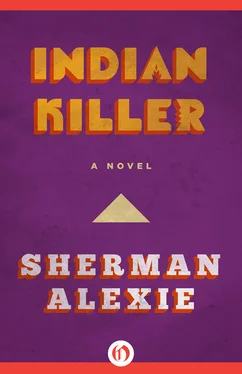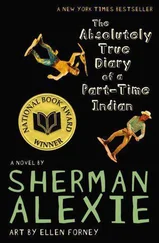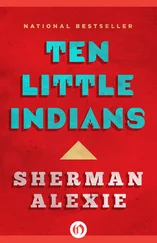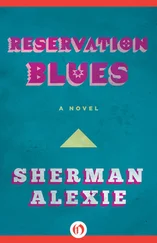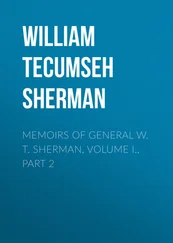“Hello,” he’d said, slowly and carefully, “I’m John Smith.”
The foreman had offered his hand and John looked at it briefly, as if he were unsure of what to do. The foreman had figured that John was just nervous, especially after he refused to make any eye contact. John was always looking down at the floor, studying his hands, looking out the window.
“So,” the foreman had said. “Why do you want to work construction?”
“I read about it,” John had said. “In a magazine. Indians like to work construction. Mohawks. In New York City.”
The foreman knew about the Mohawk construction workers, who had passed from ordinary story into outright myth. They were crazy bastards, walking across girders without safety harnesses, jumping from floor to floor like they were Spiderman’s bastard sons. There were three or four generations of Mohawk steel workers. Old Mohawk grandfathers sat around Brooklyn brownstones and talked stories about working on the Empire State Building. They scared children with tales of relatives, buried alive in building foundations, who come back to haunt all of the white office workers.
“Are you Mohawk?” the foreman had asked.
“Uh, no.”
“What are you? Snohomish? Puyallup?” the foreman had asked, running through his limited knowledge of the local tribes.
“No, I’m Lakota Sioux.”
“Sioux, huh? Bad old buffalo hunter? The Plains are pretty damn flat. What makes you think you can climb up the side of a building?”
“I’m strong.”
For no reason that he could verbalize, the foreman had hired John on the spot to do the grunt work, and John was strong, very strong. He carried scrap metal and garbage, pallets stacked with building supplies. He did every damn thing that you could want him to do, except talk much. But hell, the foreman had figured, good talkers are usually bad workers. The foreman had snuck John into the union, and pretty soon, John was climbing up the sides of buildings.
Things had been fine until John started talking to himself. Then he had stopped talking at all, stayed silent for a couple weeks, and now was walking off the job without permission, something he had never done.
“See you tomorrow, chief,” the foreman said to himself as John disappeared into the lunch-hour crowd. The foreman was pissed that John had not bothered to officially clock out. But John had been so withdrawn and goofy this morning, the foreman had even thought John might try to take a dive off the building. Better to just let him walk away. The foreman wiped his face with a dirty handkerchief and turned back to work.
John kept walking. He was unsure of where to go and could not tell the difference between the noise of the lunch-hour crowd and the noise of the crowd in his head. Maybe they were the same people. He smelled the salt in the air and decided to walk to Elliott Bay. Maybe if he stood near the water, he could clear his head. But he was not sure how to get there. He knew he should carry a map because he was always getting lost, but he had just never bothered to buy one. Besides, maps were dangerous. If you were seen looking at a map, then everybody knew you were lost and vulnerable. You were easy prey. But John was strong. He looked for familiar landmarks, saw the neon lights of a porno shop and the huge sculpture outside the Seattle Art Museum. The Hammering Man. Fifty feet tall. Nothing abstract or confusing. Just a tall man with a hammer pounding the air. A moving sculpture that had received so many insults. A waste of tax money. No face, no hair, no sexual organs, no pores, no skin. Just the metal skeleton and the metal hammer. The Hammering Man was neither Indian nor white. He may have not been a man. What did it mean? John wasn’t sure what the artist might have meant. But that didn’t matter to John. The artist wasn’t important anymore. The Hammering Man was simply all that John wanted to be. Important and powerful. Simple, unconcerned. The Hammering Man looked as if he could have stepped away from the museum, away from all the small details and painful reminders of his past, and walked into Elliott Bay. Walked until his head and hammer disappeared beneath the surface of the water. Kept walking. The hammer still pounding, still moving, back and forth, back and forth. The hammer was all that mattered. The tool and the use of the tool.
19. Native American Studies
DR. CLARENCE MATHER SAT at a disorganized desk in the bowels of the Anthropology Building. He always came down here to relax, and he needed relaxation because his office was being bombarded with crank calls concerning the murder of Justin Summers and the disappearance of David Rogers, and because his Native American literature class had become a terrible power struggle with Marie Polatkin. Though fairly intelligent and physically attractive, she was rude and arrogant, thought Mather, hardly the qualities of a true Spokane. As if it ran in the family like some disease, Reggie Polatkin had also failed to behave like a true Spokane. Mather knew he could teach both of them a thing or two about being Indian if they would listen to him, but it seemed all of the Spokanes were destined to misunderstand his intentions.
Mather and Reggie Polatkin had been friends from the very beginning. Though Reggie couldn’t have said as much, he’d immediately felt a strange kinship with the white man who wanted to be so completely Indian. Reggie was a half-Indian who wanted to be completely white, or failing that, to earn the respect of white men. Mather and Reggie were mirror opposites. Each had something the other wanted, and both had worked hard to obtain it.
Reggie and Mather traveled to men’s gatherings and went into the sweathouse together. Reggie had usually been the only Indian at those gatherings and willingly played the part of shaman for the sad and lonely white men, many years his senior, who’d come to him for answers. For the first time in his life, Reggie felt as if being Indian meant something, as if he could obtain tangible reward from simply behaving as an Indian was supposed to behave, acting as an Indian was supposed to act. And the act became so convincing that Reggie began to believe it himself. His Indian act earned him the respect of white men and the sexual favors of white women.
Through Reggie, Mather was able to obtain entry into the Seattle urban Indian community. He went to parties where all the guests were Indian. He used a counterfeit tribal enrollment card to play in the all-Indian basketball tournaments. Together, Mather and Reggie went into Indian taverns and snagged Indian women. While Reggie went to bed with the most attractive woman of any pair of friends, Mather slept with the other, only slightly less attractive, half.
This had all continued until Mather found that box of recordings of traditional Indian stories. Mather had always enjoyed negotiating the narrow passageways, rummaging and foraging here and there. A few years earlier, he had found two boxes of reel-to-reel tapes filled with the voices of Pacific Northwest Indian elders. Recorded by a forgotten anthropologist during the summer of 1926, the tapes had just been collecting dust in a storage room when Dr. Mather stumbled upon them. Excited, but still protective of the discovery, Mather had decided to play the tapes for Reggie, one of the brightest Indians Mather had ever encountered.
The professor thought Reggie had a grasp of Indian history almost as strong as his own. And Reggie’s knowledge of Spokane Indian history was probably a little more complete than Mather’s. Mather thought the young Spokane might have been able to clarify some aspects of the story.
“Listen to this woman,” Mather had said to Reggie as they listened to an Indian elder telling a story. “She’s Spokane. Do you think you can identify her?”
Читать дальше
